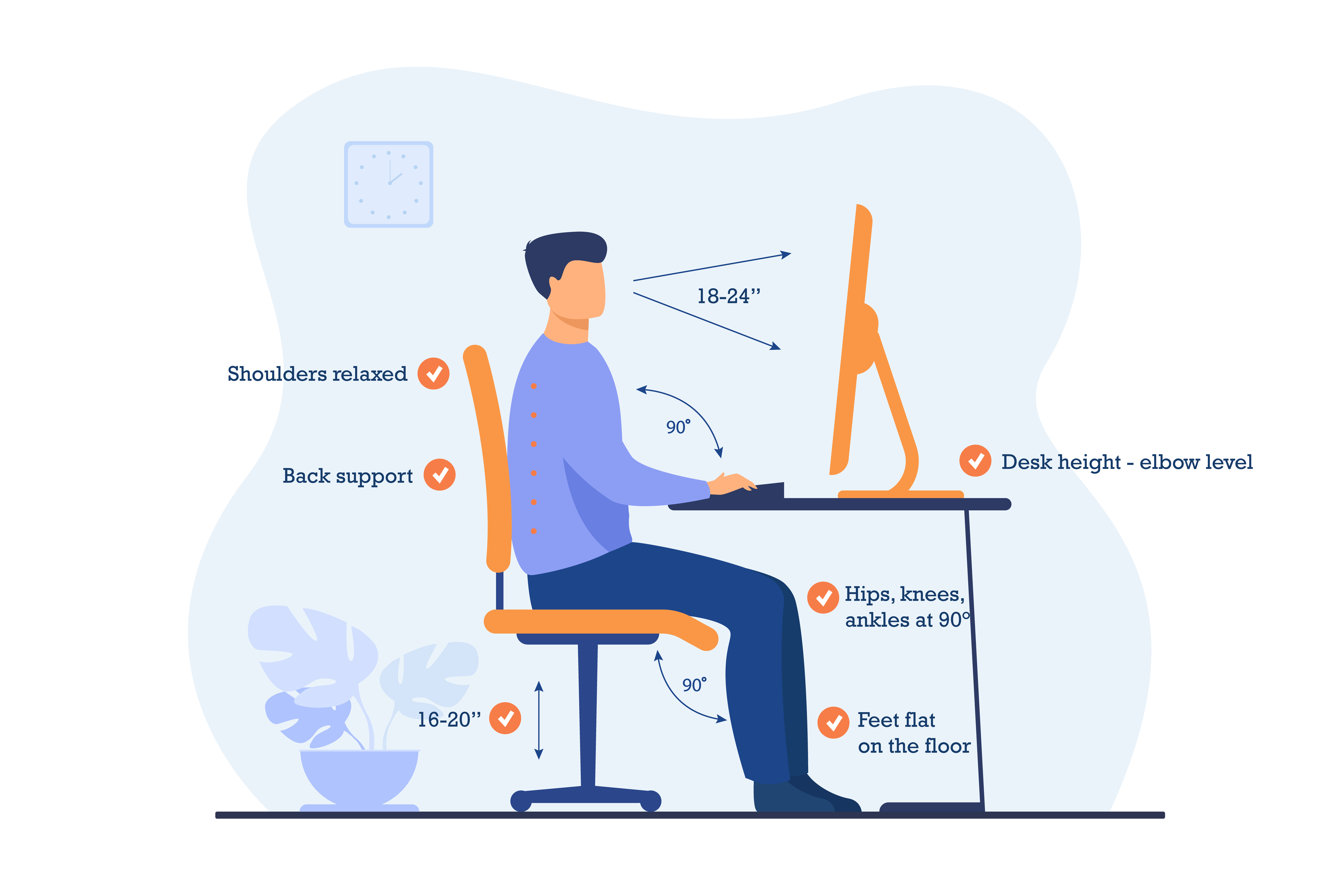
Whether you’re a work-from-home employee, a freelancer, a teenager, or a mom addicted to podcasts and online shopping, if you are always in front of a computer screen, you may be experiencing computer vision syndrome (CVS). This type of eye strain results from prolonged use of screens on digital devices, such as desktop computers, laptops, tablets, e-readers, and smartphones.
What Does Computer Vision Syndrome Cause?
CVS, also known as computer eye strain or digital eye strain, can result in various eye and other problems, including:
- Blurry vision.
- Double vision.
- Dry eyes.
- Red, itchy, or tearing eyes.
- Headaches.
- Neck and/or shoulder pain.
What Happens When You Look at a Digital Screen?
When your eyes are glued to a screen, they need to work harder to focus because the text on the screen is less sharp than the words on a printed page. Other risk factors for CVS include:
- Screen glare.
- Poor lighting.
- Uncorrected vision issues such as farsightedness or astigmatism.
- Incorrect prescription eyeglasses.
- Wrong viewing angle or distance.
- Poor posture while sitting.
Can Digital Eye Strain Be Prevented?
The good news is that you don’t need to give up your screen time completely. Here are four tips to help protect your eyes from strain and discomfort.
Adjust Your Computer
Sitting too close to your screen can increase your risk of CVS. Here’s how to position your screen:
- 20 to 28 inches from your eyes.
- About 4 to 5 inches below eye level.
- The top tilted back about 10 to 20 degrees. Your neck should not be tilting upward or downward when viewing the screen.
You can also increase contrast, brightness, and font size to make text and images easier to read and more visible.
Assess Your Posture
When sitting in front of your computer, correct posture is important. Keep the following in mind:
- Sit up straight – your ears should be aligned over your shoulders, and your head and neck should not lean forward.
- Relax your shoulders – Avoid slouching or hunching.
- Your chair height – Your feet should be flat on the floor, with your knees slightly higher than or level with your hips.
- Back support – The chair’s back should support your spine.

Reduce Screen Glare
Screen glare is caused by light reflecting off your screen. You can eliminate or reduce glare by:
- Closing shades, curtains, or blinds.
- Dimming overhead lights.
- Use a glare filter on your computer screen.
- Wearing blue-light block glasses
Blue light blocking lens shields the eye from harmful light (blue light) produced by digital screens, which helps to reduce headaches and neck aches. And it really can help to fall asleep easier, says Shu Kie, Dispensing optician from Mouqy.
Take Regular Breaks
To minimize your risk for digital eye strain, routine breaks are essential:
- Adhere to the 20-20-20 rule to help your eyes rest and refocus. Look at something 20 feet away for 20 seconds every 20 minutes.
- Rest your eyes for 15 minutes. After 2 hours of continuous screen use, move away from your computer and focus on things that are further and closer than your digital screen.
- Do non-screen tasks. When taking your breaks, do something different, e.g., organize paperwork, keep up with your home workout, or take the dog for a walk.
When to Visit a Doctor
If your symptoms are not eased or worsened, make an appointment with an eye doctor. Also, visit a doctor if you experience:
- Sudden vision changes.
- Eye flashes.
- Eye pain or redness that doesn’t go away.
- Dry eyes that don’t improve with eye drops.
A doctor may also suggest visual training (also called vision therapy).
Are You Wearing the Correct Eyeglasses?
Wearing prescription lenses that aren’t formulated for computer work makes it hard for your eyes to focus properly. You may need a new prescription designed for viewing digital screens.
Here are the tips to get the correct glasses:
- Anti-reflection lens coating helps to improve visual sharpness.
- Choose the glasses that suit your face through virtual try-on
- Blue light blocking technology helps to protect your eyes from the harmful blue light emitted by digital screens.
Leave a Reply